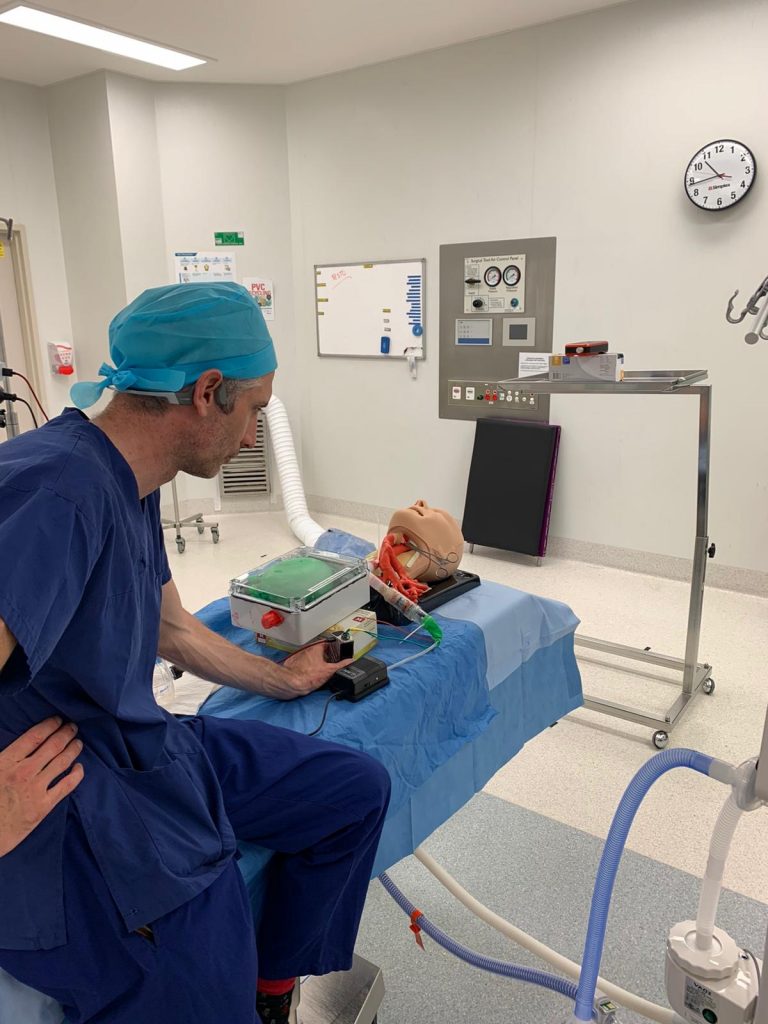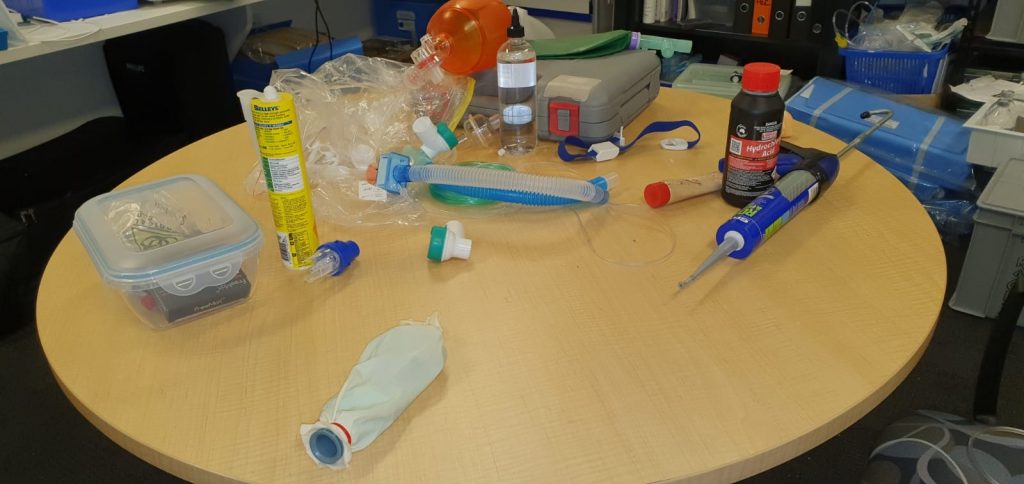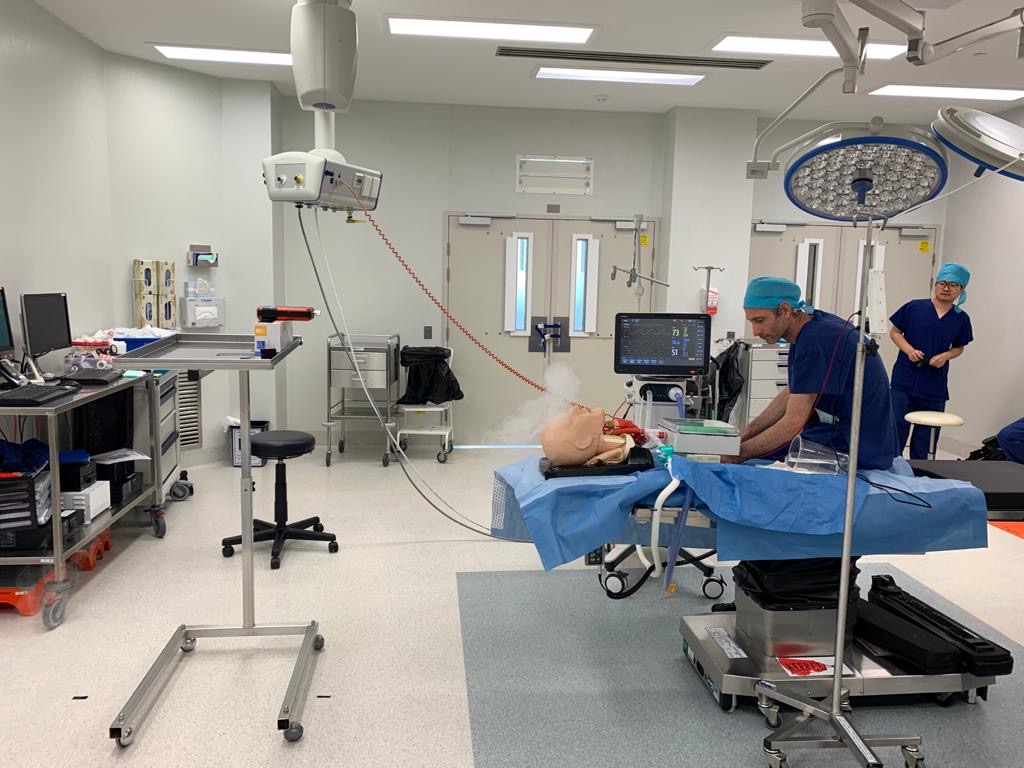Aerosol generation
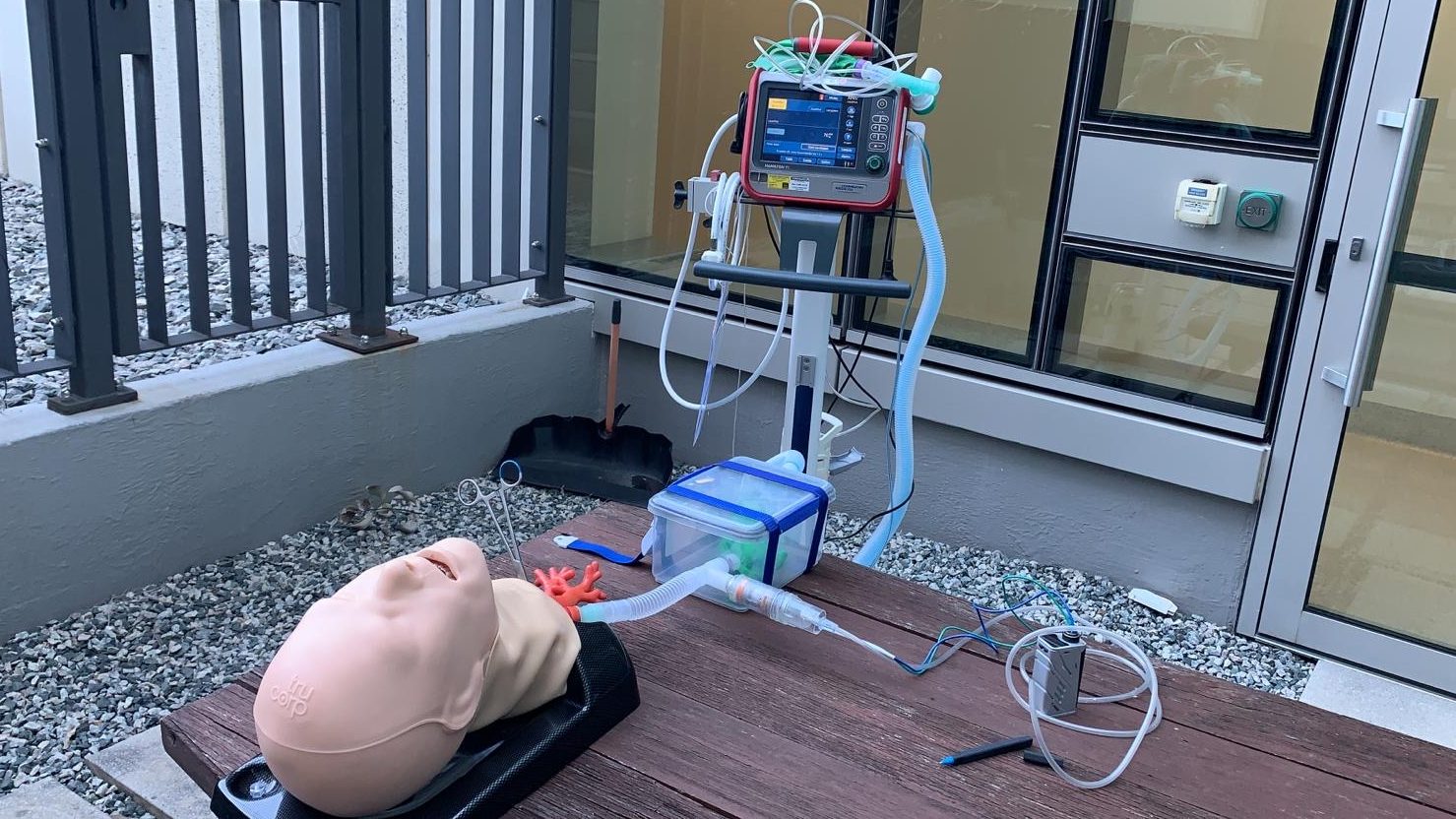
Quantitative assessment of aerosol behaviour in real clinical environments is challenging to achieve and there is a lack of experimental data in the literature. We began our investigation using human volunteers exhaling Propylene Glycol vapour (PG). Whilst human models allow for good qualitative assessment, they present too many uncontrollable variables to use as a consistent experimental model. Commercial patient simulators are generally poor physiological lung models (Simman 3G) or are not portable in the clinical setting (METI). This led us to the development of a unique physiologically accurate portable lung simulator.
Principle
- Negative pressure Inspiration Gas Exhaling Lung
- Provides repeatable, measurable, physiologically accurate breathing patterns
- A positive pressure ventilator drives gas in to a primary lung, generates reciprocal breathing pattern in the secondary lung in a sealed airtight container.
- The secondary lung is connected to an anatomically correct mannequin head (TruCorp).
- Propylene Glycol (PG) can be introduced from the modified e-cigarette coil via a T-Piece in to the mannequin trachea and is entrained during the negative pressure inspiratory and positive pressure expiratory phases.
Construction of NIGEL
The NIGEL was a constructed from simple cheap materials widely available in the clinical setting.
For further information please contact us directly. We will be happy to supply a build list.
Operation of NIGEL
- Respiratory rate/volume/pressure can be controlled by changing parameters on the driving ventilator
- Output can be measured using flow sensors on a secondary ventilator or anaesthetic machine
- This can be done in either a simple manual breathing circuit via a face mask or via a cuffed ETT
- Propylene glycol can be introduced by operation of the E-cigarette coil in continuous bursts as required. Please follow the link for more detailed explanations of this part of the device.
Flow volume loops
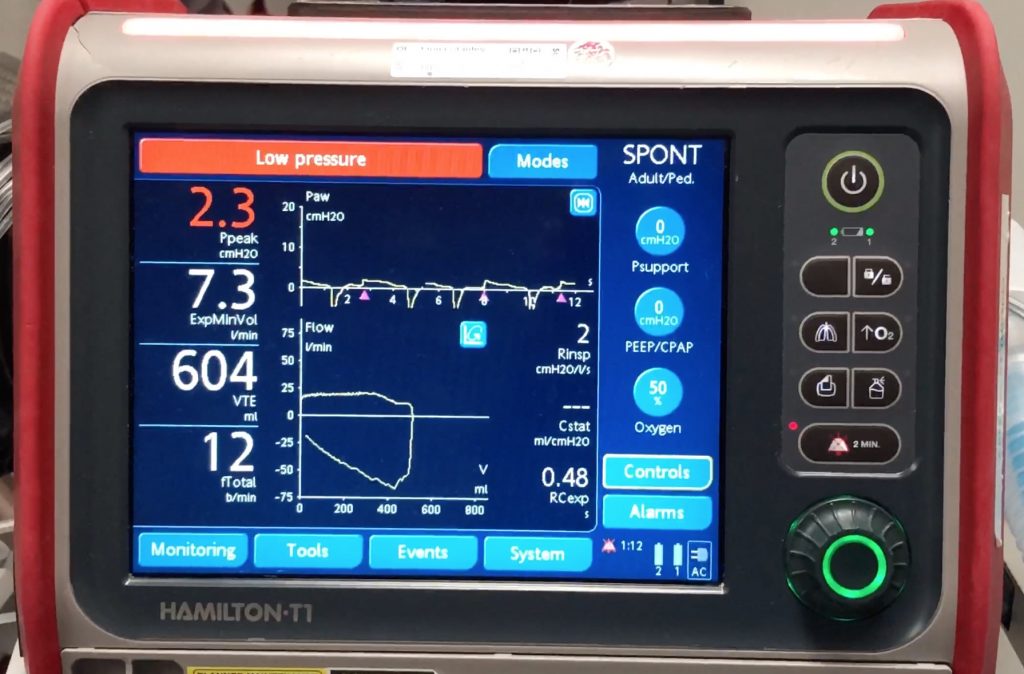
Cough
- Simulation of a cough was important to study.
- Coughing can be simulated by the addition of a high volume single stroke, manual pump and bag module to the secondary lung.
- Rapid inflation of the bag by the pump stroke generates a realistic cough impulse and expels “inhaled air” from the secondary lungThe simulated cough is repeatable, measurable and physiologically accurate
Applications
- The NIGEL is highly portable and can be easily moved to different areas requiring airflow testing.
- The NIGEL can be fitted with the full range of clinically used airway devices, masks and non invasive ventilatory support to examine their effects on aerosol distribution during normal breathing and coughing
- Surgical mask
- THRIVE
- NIV

